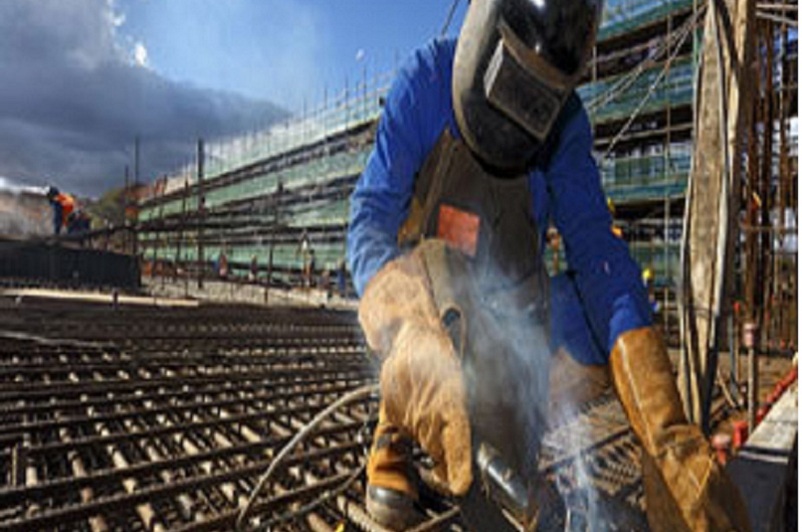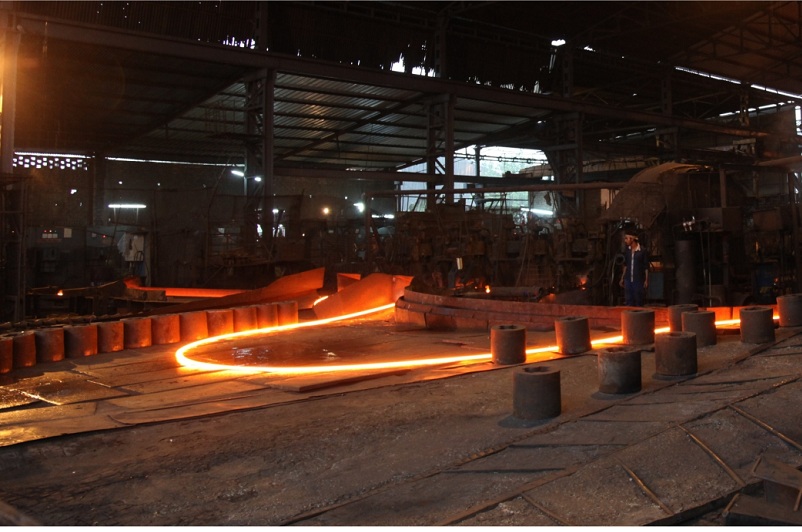
Carbon and Energy
Making best use of resources by adapting Innovative technologies:
Electric shaft furnace
Rathis Bars Limited has installed an electric shaft furnace of the latest design which consists of a crucible, a shaft arranged on the side above it and three power feed graphite electrodes with holders.
Scrap is preheated in the shaft by the chemical and tangible heat of combustion gases which brings about a corresponding saving of energy.
After the tapping operation is completed, the emptied crucible is filled with pre-heated scrap; the energy of the arc between the electrodes and the scrap melts it down. At the same time, oxygen does the metallurgical work, that is, it lowers the carbon, phosphate and sulfur contents. Lime bonds the chemical compounds which form and run through the furnace door in the form of slag.
The melting down of the new charge (approximately 70 tons of steel), is continuously monitored to determine the correct tapping point which depends on temperature and the chemical composition of the melt.
When the required temperature and the chemical composition are reached, the taphole in the furnace base is opened and the melt allowed to run into a ladle lined with fire-proof coating.
Secondary metallurgy
The fast tap-to-tap times achieved with modern electric arc furnaces do not provide for fine adjustment of metallurgical quality.
Fine adjustments are introduced in a secondary process in what is referred to as a ladle furnace.
This is where the chemical composition of the steel and the temperature of the steel are adjusted to the level required for continuous casting. The grades of steel produced in Rathi Steel are unalloyed carbon steel grades with properties dependent on the appropriate carbon and manganese content. Vanadium forms a fine grain and is required in some steel varieties.
Continuous casting plant
Over the last 40 years, continuous casting has become increasingly popular in the production of rolling steel, particularly flat steel bars and long steel products.
Liquid steel is continuously poured into water-cooled copper molds with intermediate dimensions very close to those of the finished products (billets or slabs). Just the same amount of steel as enters the mold in liquid form is removed from the bottom end, solidified on the surface (mold 800 mm long) and cut with flame cutting machines to the required length. Slabs (130 x 170 up to 130 x 300 sq.mm) are carried to the storage by side loading form trucks.
Bar mill:
Reinforcing steel rods and steel bars up to 100 mm wide are rolled here on to a cooling bed almost 100 m long. Reinforcing steel rods are also quenched direct from the rolling temperature, just like the coiled product.
Innovative method of Manufacturing of Steel Bars
Hot charging and hot delivery process of continuous casting billet has the advantages of saving energy, improving the production capacity of heating furnace, reducing the burning loss of billet, decreasing the rolling fault, improving the rate of finished products, speeding up the logistics movement, reducing billet storage warehouse and liquidity occupation etc
- Company Profile for Rathi Bars Ltd – Reuters India Published: September 28, 2018
- Rathi Bars Ltd. Stock Price, Share Price, Live BSE/NSE, Rathi Bars Ltd. Published: September 28, 2018
- Anurag Rathi – Individual Member Detail Published: September 28, 2018
- Rathi Bars Ltd (532918:Bombay Stock Exchange) Published: September 28, 2018
- Structural Steel – Preferred Material for Construction Published: September 28, 2018
- What are Earthquake Resistant TMT Bars Published: September 28, 2018



